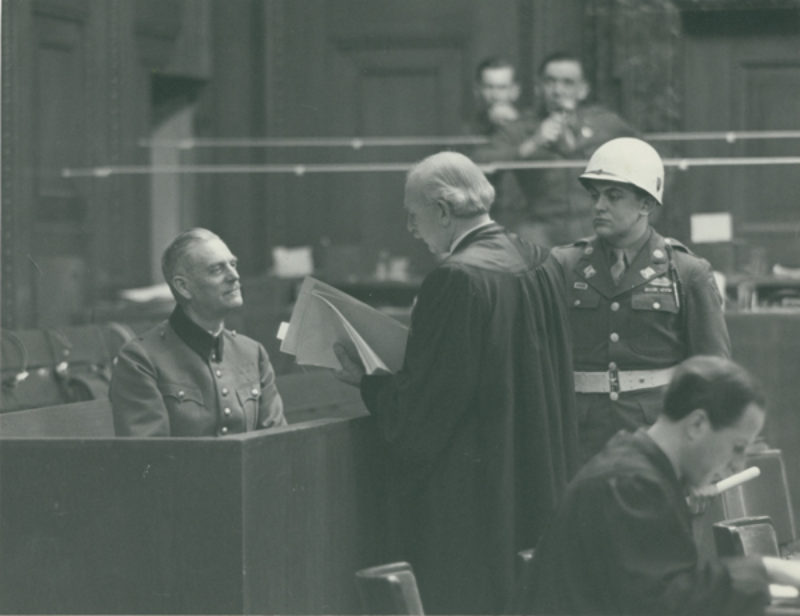Collections
-
Writings
- Law Review Articles about Robert H. Jackson
- Articles About Robert H. Jackson
- Books
- Early Life & Career (1892-1933)
- Treasury Department, Bureau of Internal Revenue (1934-1936)
- Assistant Attorney General, Tax Division (1936)
- Assistant Attorney General, Antitrust Division (1937)
- Solicitor General of the United States (1938-1940)
- Attorney General of the United States (1940-1941)
- Associate Justice of the Supreme Court (1941-1954)
- Nuremberg Prosecutor (1945-1946)
-
Photos
- Early Life & Career (1892-1934)
- Treasury Department, Bureau of Internal Revenue (1934-1936)
- Assistant Attorney General, Tax Division (1936)
- Assistant Attorney General, Antitrust Division (1937)
- Solicitor General of the United States (1938-1940)
- Attorney General of the United States (1940-1941)
- Associate Justice of the Supreme Court (1941-1954)
- Nuremberg Prosecutor (1945-1946)
-
Speeches
- Early Life & Career (1892-1934)
- Treasury Department, Bureau of Internal Revenue (1934-1936)
- Assistant Attorney General, Tax Division (1936)
- Assistant Attorney General, Antitrust Division (1937)
- Attorney General of the United States (1940-1941)
- Solicitor General of the United States (1938-1940)
- Associate Justice of the Supreme Court (1941-1954)
- Nuremberg Prosecutor (1945-1946)
- Supreme Court Opinions

Robert P. Patterson, Furth Airport, Germany
United States Secretary of War, Robert P. Patterson at Furth airport in Germany.

Wilhelm Keitel, IMT, Nuremberg Germany, 1945-1946
Defendant Wilhelm Keitel talks with his defense in the free period after noon lunch. Wilhelm Keitel was a German Field Marshal, head of the Oberkommando der Wehrmacht (Supreme Command of the Armed Forces) and de facto war minister. At the Allied court at Nuremberg he was tried, sentenced to death and hanged as a major war criminal October 16, 1946.

Albert Kesselring, IMT, Nuremberg Germany, 1945-1946
Witness is Albert Kesselring, a German Luftwaffe Generalfeldmarschall. After the war, Kesselring was tried for war crimes and sentenced to death. The sentence was subsequently commuted to life imprisonment. A political and media campaign resulted in his release in 1952 for poor health. Commander-in-Chief of German Forces in Italy and Military Commander of Italy. Presented as a witness in Goering's defense.

Robert H. Jackson & William E. Jackson leaving Palace of Justice, IMT, Nuremberg Germany, 1945-1946
"U.S. Prosecutor Robert H. Jackson leaves the courtroom following the morning session. Directly behind him is his son, Ensign William E., working with the American Prosecution Staff."- Ray D'Addario

Nuremberg in Ruins, Along the Pegnitz River
"Nuremberg in ruins, along the Pegnitz River" Nuremberg was severely damaged in Allied strategic bombing from 1943-45. On January 2, 1945, was systematically bombed by the Royal Air Force and the U.S. Army Air Forces and about ninety percent of it was destroyed in only one hour, with 1,800 residents killed and roughly 100,000 displaced. In February 1945, additional attacks followed. In total, about 6,000 Nuremberg residents are estimated to have been killed in air raids

A Ruined Nuremberg, 1945-1946
"A Ruined Nuremberg" Nuremberg was severely damaged in Allied strategic bombing from 1943-45. On January 2, 1945, Nuremberg was systematically bombed by the Royal Air Force and the U.S. Army Air Forces and about ninety percent of it was destroyed in only one hour, with 1,800 residents killed and roughly 100,000 displaced. In February 1945, additional attacks followed. In total, about 6,000 Nuremberg residents are estimated to have been killed in air raids

Nuremberg with River and Ruins, 1945-1946
Nuremberg was severely damaged in Allied strategic bombing from 1943-45. On January 2, 1945, Nuremberg was systematically bombed by the Royal Air Force and the U.S. Army Air Forces and about ninety percent of it was destroyed in only one hour, with 1,800 residents killed and roughly 100,000 displaced. In February 1945, additional attacks followed. In total, about 6,000 Nuremberg residents are estimated to have been killed in air raids

Cathedral In Ruins, Nuremberg Germany, 1945-1946
A family stands among the ruins Nuremberg, where only a portion of the Cathedral remains. Nuremberg was severely damaged in Allied strategic bombing from 1943-45. On January 2, 1945, Nuremberg was systematically bombed by the Royal Air Force and the U.S. Army Air Forces and about ninety percent of it was destroyed in only one hour, with 1,800 residents killed and roughly 100,000 displaced. In February 1945, additional attacks followed. In total, about 6,000 Nuremberg residents are estimated to have been killed in air raids

Tight Rope Walkers, Nuremberg Germany, 1945-1946
Tight Rope walkers perform for a crowd of people in front of the city ruins. Nuremberg was severely damaged in Allied strategic bombing from 1943-45. On January 2, 1945, Nuremberg was systematically bombed by the Royal Air Force and the U.S. Army Air Forces and about ninety percent of it was destroyed in only one hour, with 1,800 residents killed and roughly 100,000 displaced. In February 1945, additional attacks followed. In total, about 6,000 Nuremberg residents are estimated to have been killed in air raids

Devastation of Nuremberg
A young woman walks down a path cleared between the ruins of fallen buildings in Nuremberg. Nuremberg was severely damaged in Allied strategic bombing from 1943-45. On January 2, 1945, Nuremberg was systematically bombed by the Royal Air Force and the U.S. Army Air Forces and about ninety percent of it was destroyed in only one hour, with 1,800 residents killed and roughly 100,000 displaced. In February 1945, additional attacks followed. In total, about 6,000 Nuremberg residents are estimated to have been killed in air raids
